|
August 28, 2022
Dear Neighbors and Friends,
I hope that you and your loved ones are doing well, staying healthy, and looking out for your neighbors and friends during this past week.
We won’t receive our next COVID update/forecast from OHSU till the end of this week, but as you’ll see in tonight’s newsletter, our experience here in Oregon remains consistent with their predictions. The number of those affected by COVID remains high, but as far as we can tell from reported cases, it continues to decline from the high point we reached in the spring. Fortunately, the number of those severely ill with COVID and needing hospital care or dying of the diseas continues to decline.
It’s now looking as if the new “Bivalent” COVID vaccine boosters (focused on the new Omicron variants as well as the original disease) will begin to be available next month. You’ll find links to articles about what that rollout will look like. (Warning: it may be rocky.)
Along with the COVID data, links, and graphs in tonight’s newsletter you’ll also get the details on next Saturday’s zoom constituent coffee, our bike town hall the following Saturday, this week’s workgroup meeting on the big poultry operations proposed for the Willamette Valley, a river tour that I took of Portland’s “Working Waterfront,” and the latest on plans to implement the new program to oversee seismic safety of the many fuel tanks on the Willamette and Columbia.
And the latest on wildfire season here in Oregon.
Until next time, please do your best to stay healthy and safe. And let me know if you have any questions or thoughts about anything in this week’s newsletter.
COMING ON SATURDAY: August Constituent Coffee!!!
This coming Saturday, September 3, is the first Saturday of the month, which means another monthly constituent coffee from 9 am to 10:30 am. We’ll be returning to Zoom for this meeting since I’ll be out of town.
It will be a chance for me to report on work groups that are underway, let you know about bills likely to come our way in 2023, about upcoming committee meetings and deadlines, and get your thoughts on priorities and future action.
You can register for the September 3rd Coffee here. See you there!
It’s Time for the 2022 Bike Town Hall!!!
Yes, it’s that time of year again: when we take our town hall outside, in very good company: Representatives Barbara Smith Warner (HD 45) and Khanh Pham (SD (46), AND YOU!!!
This year’s town hall will be on September 10. We’ll be focusing on the northern (HD 45) part of the district (we alternate every year).
This year's Annual Joint Bike Town Hall will feature a casual, non-strenuous 3 mile group bike ride, using approved bike routes and protected bike lanes through NE Portland. We’ll be stopping along the way to meet with locals working on interesting projects. Discussions along the route will highlight education, climate, transportation, and housing.
Let us know if you need to borrow a bike! Food and drinks provided. Bring a mask in case we go indoors or get in close company for
Saturday, Sept 10th, 9:00 am - 12:30pm Starting Location: Leodis V. McDaniel High School (former Madison HS), 2735 NE 82nd Ave. Portland, OR Exact route information will be provided after registration. Please contact maria.gomez@oregonlegislature.gov with any questions.

Have Thoughts on Poultry CAFOs? You Can Share Them
The work group that I’m chairing on proposed poultry CAFOs (Confined Animal Feeding Operations) in the Willamette Valley (for background see the July 8th newsletter)) has had three meetings so far. In the first we learned about the process of applying for a permit to operate one of these large operations—in this case a facility that will bring in approximately a million chicks and raise them in large barns until they’re ready for slaughter.
In the second meeting we learned about how CAFOs intersect with our land-use laws and county permitting process. We learned that because they are considered a legitimate agricultural practice, they can be located in any area zoned for farm use, as long as they are not creating a harmful impact on water quality or neighboring businesses.
In the third meeting we learned about the process of getting permission to access water for a CAFO operation. The proposed operation in Scio was able to inherit the existing irrigation water rights that came with the property that it purchased. There is a public process involved for the transfer of rights, and the Water Resources Department can put conditions on the water that’s used for cooling and cleaning the facility. However, all the water that is used for drinking water for the birds is considered an “exempt use,” meaning that under existing Oregon law it is free from the permitting process.
For more details, you can find all the PowerPoints and background materials, as well as recordings of the meetings, on the Workgroup website.
The fourth meeting of the work group will be this Wednesday from 3 p.m. to 5 p.m. It will be devoted entirely to hearing from the public. If you have input you’d like to provide, you can do so via written testimony, or by Zoom (actually, Microsoft Teams), or both. You can sign up via that same website.
Please let me know if you have any questions.
Another Big Fire in Southwest Oregon
It has been another week of lightning strikes and new fires. Fortunately, for the most part, cooler temperatures and quick response has kept them contained. The one big exception is the Rum Creek Fire in Josephine County, where winds and increasingly hot, dry weather is creating extremely dangerous conditions.
As of today, it has grown to over 8000 acres and has led the Governor to invoke the Emergency Conflagration Act to bring in a variety of coordinated resources. Level 3 evacuation orders have been issued for parts of the region. You can find more detail in this article in today’s Register-Guard.
The Southwest region has its own wildfire blog with more details.
For daily information on the fires around the region, here’s the Northwest InterAgency Coordination blog: http://nwccinfo.blogspot.com/
And again, I’d also recommend KOIN TV’s Wildfire Watch 2022.for ongoing information and stories. They’re doing a great job of covering the wildfire situation in the state.
A Look at the CEI Hub--From the River and from DEQ
On Friday I represented the Legislature s a guest of the Working Waterfront Coalition https://workingwaterfrontportland.org/ on a boat tour of Portland’s “Working Waterfront.” It’s a perspective on the region’s commercial, industrial, shipping, ship repair, and rail infrastructure that few of us get to see up close.
The Working Waterfront Coalition includes the Port of Portland and more than 20 companies located on the Willamette and Columbia River waterfronts. They are responsible for many tens of thousands of jobs and billions of dollars of economic activity. Together with members of the Portland City Council, I was able to hear about the work done by these companies and the challenges that they face.
The biggest challenge for most of them right now—not surprisingly—is finding workers. Despite the fact that most of the jobs on the waterfront pay very well and have good benefits, most of the companies are finding it difficult to find workers to replace their aging workforce. Career/Technical Education programs at Portland Public Schools and Portland Community College are helping, but more is needed. I was pleased to hear that many of the employers in the coalition are “Second Chance Employers”—i.e., willing to take a chance on workers who were formerly incarcerated—and have had very good experiences with those workers.

Several of those presenting to us were from the fuels companies that have their tanks on the riverside in the "Critical Energy Infrastructure (CEI) Hub." You'll recall that during the last legislative session I led the effort to pass Senate Bill 1567, which authorized and funded DEQ to create a program that evaluates the vulnerability of fuel tanks to earthquakes and requires facilities to develop a plan to reduce risk.
These facility mitigation plans will include actions to protect public health, life safety, and environmental safety within the facility, in areas adjacent to the facility and in other areas that may be affected because of damages to the facility. The plans must consider the impacts of a magnitude 9.0 Cascadia Subduction Zone earthquake, the potential consequences of that event and the resources needed to respond.
Although we didn't hear any outright complaints about the new program from the representatives of the fuel companies on the tour, they did all stress the important role that they play in making sure that we have access to the fossil fuels that we need during this period that we remain dependent on this energy source. Despite third-party studies that suggest otherwise, they believe that their tanks will be able to withstand the effects of a big earthquake.
If so (and let's hope that's the case), they should have no difficulty complying with the requirements of the new DEQ program.
The program is of course still in its first months. The first step will be to develop the rules that will guide the program. DEQ is preparing to set up a rules advisory committee (RAC) that will provide input and suggestions during the development of these new rules. The RAC will include representative from industry, scientists, public health, disaster response, and impacted communities.
The rules for this program may include:
- What the assessment and risk reduction plans from the facilities have to include for DEQ to approve them
- What facilities must do to stay prepared and keep their operations safe
- What facilities must do to minimize harmful impacts to local communities and the environment in the event of an oil release from an earthquake
- Inspection requirements
- Design and construction requirements for any new storage tanks and seismic improvements for existing tanks
The tentative Rulemaking schedule is as follows:
RAC Meeting 1 October 2022
RAC Meeting 2 December 2022
RAC Meeting 3 January 2023
Public Comment Period April/May 2023
EQC (Environmental Quality Commission) Hearing September 2023
Facility Assessments/Mitigation Plans due June 1, 2024
Please let me know if you have any questions about the tour or the rollout of the new CEI Oversight Program.
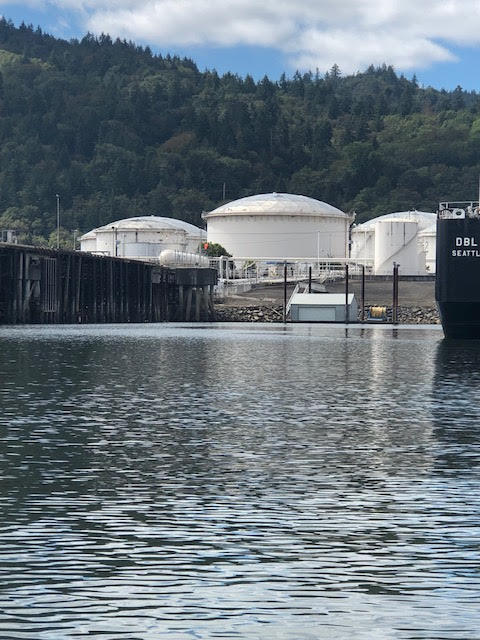 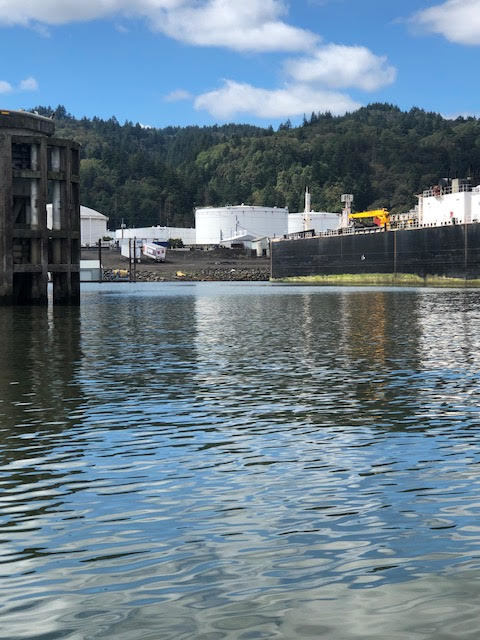 
ON THE COVID FRONT
Weekly Data Report:
Here is what this last week looks like in Oregon, based on information gleaned from OHA's daily reports. At the end of the newsletter you’ll find graphs that I’ve put together showing the daily counts and trends for the last two weeks.
Overall, all the chief COVID metrics--infections, test positivity, hospitalizations, and deaths have gone down in the last week. We appear to be in line with the latest OHSU forecasts, continuing on the downslope of the “Omicron COVID Crest.”
- The number of reported infections has dropped over the last week. OHA reported 4,950 new cases of COVID-19 during the week of August 19-25 (vs. 5,743 the week before), a 7-day average of 707 per day (vs 820 the previous week). The number of new cases is again likely an undercount, as many people are using home tests to determine their infection status but are not reporting those results.
- Average test positivity for the last week was 9.7%, down from the previous week’s 10.8%. Again, this number skews high because it likely reflects a higher proportion of people showing COVID symptoms (and thus going in for a test, rather than self-testing).
- On Wednesday there were 297 COVID-19-related hospitalizations statewide, vs. 328 last Thursday. Hospitalizations are now our best indicator of disease spread. Again, however, most of these hospitalizations are not in and of themselves due to COVID—more than half are those who tested positive after having been admitted for other reasons.
- The number of COVID patients in Oregon’s ICUs has gone down again over the last week: 36 on Thursday, down from last week’s 38. These are the most serious COVID infections.
- There were 39 COVID-19-related deaths reported during the last week, vs. 77 last week. Again, some of these deaths actually occurred in earlier weeks but were just reported to the state.

Weekly County Report: Only One County Now at High Risk; 21 at Low
According to the CDC Daily Counter (updated each Thursday), just 1 Oregon county (down from 2 last week) are now at high risk of COVID transmission: Malheur in far Eastern Oregon. The CDC assigns these risk levels based on a combination of the number of new COVID cases and the number of people in hospital for COVID.
Here’s what the CDC recommends for this category: Stay up to date with COVID-19 vaccines. Get tested if you have symptoms. Wear a mask if you have symptoms, a positive test, or exposure to someone with COVID-19. Wear a mask on public transportation. You may choose to wear a mask at any time as an additional precaution to protect yourself and others. If you are at high risk for severe illness, consider wearing a mask indoors in public and taking additional precautions.
Fourteen Oregon counties (same as last week) have reported infection rates that place them in the Medium Risk category: Baker, Gilliam, Grant, Harney, Hood River, Jackson, Jefferson, Josephine, Klamath, Lake, Sherman, Union, Wasco, and Wallowa.
Twenty-one Oregon counties (up from 13)— Benton, Clackamas, Clatsop, Columbia, Coos, Crook, Curry, Deschutes, Douglas, Lane, Lincoln, Linn, Marion, Morrow, Multnomah, Polk, Tillamook, Umatilla, Washington, Wheeler, and Yamhill—are now at Low Risk.
We can also track the test positivity rates for each county at this dashboard. The test positivity rates reported this week show continued increases.
At 8.6%, Multnomah County shows a reduction from last week’s 9.6%. Washington County remains the same as last week: 9.3%. Clackamas County is again the lowest of the three Metro counties: 7.4%, just slightly down from last week’s 7.6%.

This Week’s Wastewater Monitoring Report Shows Continuing Plateau in Oregon Cities
With testing reports giving us just a fraction of infections out there, wastewater monitoring has become a more reliable indicator of the amount of virus in cities around the state. That report is updated each week.
This week’s report shows us that nearly all cities show little change in the amount of virus in their wastewater. Interestingly, two neighboring cities on the Coast (Lincoln City and Newport) show opposite trends: Newport shows an increase, while Lincoln City is continuing to show a sustained decrease.
Of the cities monitored, 3% showed decreases (vs. 0% last week), 3% showed sustained decreases (vs. 18% last week), 5% showed increases (vs. 0% last week), 0% showed sustained increases (vs. 5% last week), and 90% remained on a no-change plateau (vs. 76% last week).
Additional COVID Updates and Links
- Here’s the latest on COVID in Oregon from the Oregonian.
- The American Public Health Association invited Dr. Leona Wen to be on a panel at their annual conference, an invitation that has led to backlash from some members. Ironically, the subject of the panel is “COVID Backlash.” Dr. Wen has been the subject of attacks from those who have found her advice too stringent and from those who have found it not stringent enough. Here's more.
- The Co-Director of the Critical Illness, Brain Dysfunction and Survivorship (CIBS) Center at Vanderbilt University writes about what we currently know about the brain's resilience in the face of Long COVID.
- The first year of the pandemic saw a significant decline in U.S. life expectancy, particularly in New York. Here are the details from the U.S. Division of Vital Statistics.
- Unlike in the U.S., where COVID deaths are down this year, in the U.K. twice as many have died this summer compared to 2021.
- Pfizer and BioNTech have submitted their request for authorization of their new Bivalent Omicron vaccine. So has Moderna.
- The White House is developing plans for a new booster campaign to coincide with the availability of the new vaccines.
- However, according to the New York Times, securing widespread distribution and use of the vaccines will be a real challenge, now that Congress has allowed funding to dry up.
- The Editorial Board of the Washington Post argues that the new boosters are a bit of a gamble, but one well worth taking.
- Scientists are developing home tests that will allow us to gauge our level of COVID antibodies.
- Are we approaching COVID "herd safety."
-
Physicians address parents' concerns regarding COVID vaccines for young children.
- As scientists consider the potential effectiveness of the bivalent vaccines coming this fall, they are also considering the nature of "original antigenic sin."
- At this point, people who experience a return of COVID despite having received Paxlovid are not being prescribed Paxlovid again. The FDA has asked Pfizer to run a test to determine the potential effectiveness of a second course of Paxlovid.
- OHA’s COVID blog has a piece on how COVID affects your lungs.
 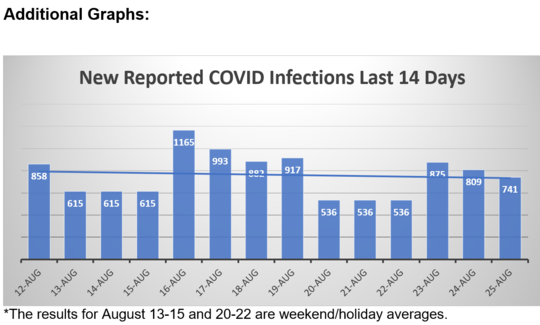

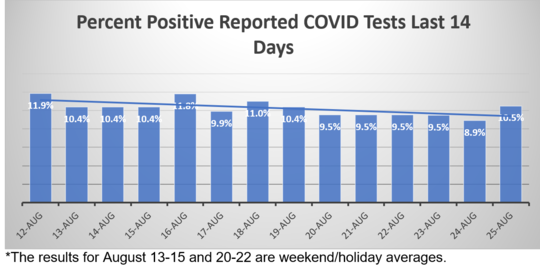

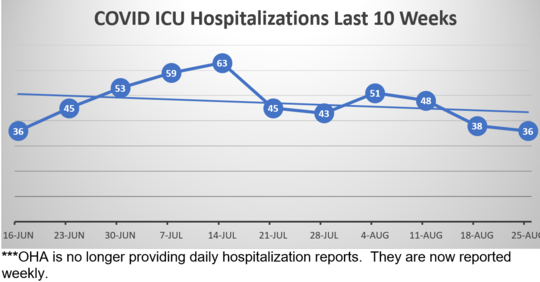

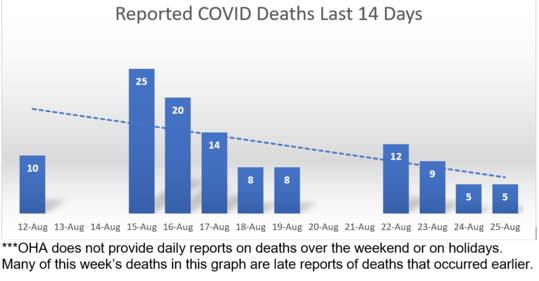

Here again are some COVID resources that you will find useful:
If the above links are not providing you with answers to your questions or directing you to the help that you need, please consider me and my office to be a resource. We’ll do our best to assist you or steer you in the right direction.
Want to See Past Newsletters?
If there was COVID-related information in a past newsletter that you want to go back to, but find you’ve deleted it, you can always go to my legislative website (senatordembrow.com), click on “News and Information,” and you’ll find them all there. Also, if someone forwarded you this newsletter and you’d like to get it directly, you can sign up for it there.
Best,
 Senator Michael Dembrow
District 23
email: Sen.MichaelDembrow@oregonlegislature.gov
web: www.senatordembrow.com
phone: 503-986-1723
mail: 900 Court St NE, S-407, Salem, OR, 97301
|